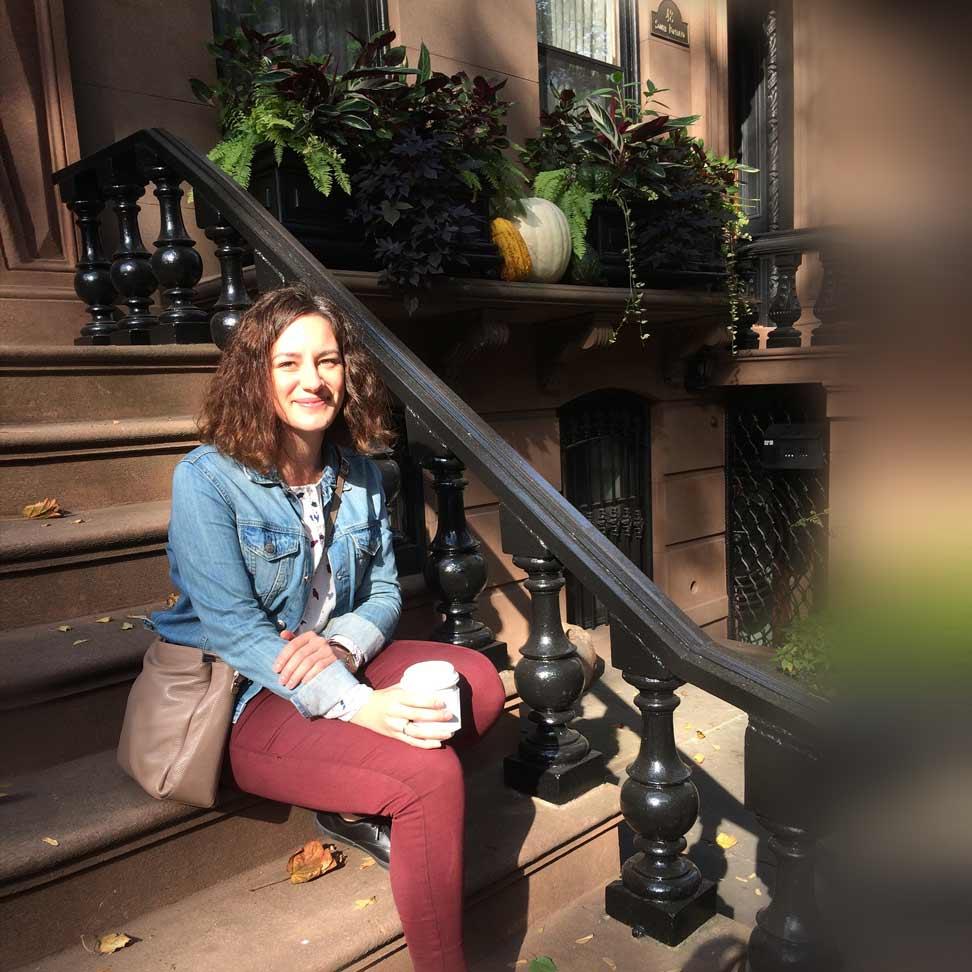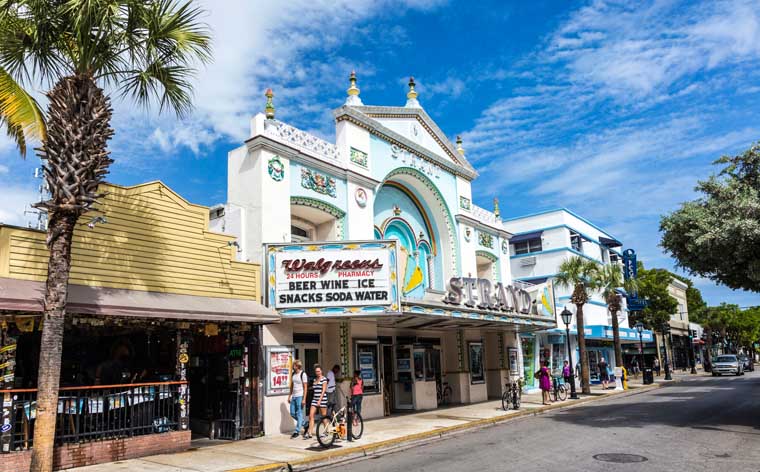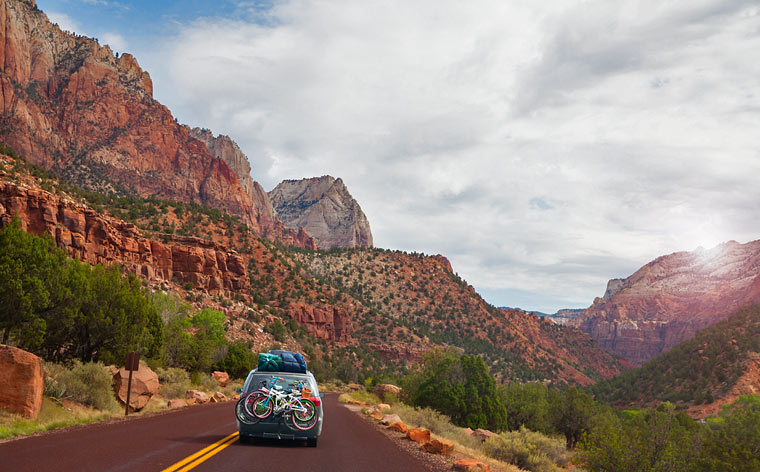Images of gothic castles sunken in fog and haunted by blood-crazed vampires come to mind when thinking of Transylvania – a place forgotten in time. Made famous by Bram Stoker’s novel Dracula, Transylvania contains some of Romania’s most beautiful sights and pristine nature.
Bound by the Carpathian mountain range, Transylvania covers the central part of the country. The region has been controlled by Hungarians and Transylvanian Saxons throughout time, and the multicultural heritage is still alive. Transylvania – “the land beyond the forest”, as the Latin name translates – is called Ardeal in Romanian, Erdély in Hungarian and Siebenbürgen in German.
The best way to explore Transylvania is by car – yet be aware that the infrastructure is still a bit deficient, so calculate extra driving time. Fasten your seat belt and start your Transylvanian road trip. For some new and old, folk, classical and indie Romanian tunes, hit play on the playlist below.
Day 1-2 Arrival in Cluj-Napoca
Romania’s second-largest city, Cluj-Napoca, is home to country’s biggest university, making the city a non-stop hubbub of activity.
One of the city’s centerpieces, St Michael’s Church (Biserica Sfântul Mihail) will be difficult to pass by. A 14th- and 15th-century gothic masterpiece, it’s the second-largest of its kind in the country, and was erected over a period of 100 years. Some of the elements to pay attention to are the soaring clock tower, the front portal featuring various coats of arms, and the frescoes of the Schleunig chapel.
Contemporary art is alive and well in Cluj, and a visit to the industrial space of The Paintbrush Factory (Fabrica de Pensule) will uncover an art collective spanning theater, dance, visual arts and music.
Stroll through the tranquil rockeries of The Botanical Garden before making plans for the evening. Stop by nearby tiny yet extremely cozy teahouse La Perne for an afternoon tea, taste some Romanian-style tapas at Casa Boema and end the day with a cocktail at Hemingway Bar.
Recommended hotel: Hampton by Hilton Cluj-Napoca (rates start at 359 RON [£67] per room, per night)
Day 3 Turda
After a good night’s sleep, take to the road and drive for 45 minutes south towards Turda, a relatively small town with an enduring history going back to the times of Ancient Rome.
One of the biggest marvels you’ll find here is the secret underworld of Salina Turda, an impressive salt mine resembling a dragon’s lair. 2900 foot corridors, colossal salt stalactites hanging from the ceilings, a lake complete with a small island, and even a church altar carved in salt – this place resembles something out of a scary gothic tale. And wait until you see the 1881 extraction apparatus – a horse-powered machine used to transport the salt out of the mine.
Day 3-4 Alba Iulia
After a couple of hours breathing in the healing salty air, take the drive further south to Alba Iulia (1½ hours), one of Transylvania’s most well-preserved fortress towns.
Alba Iulia is a place of high historical significance for Romanians, not least due to it being the place where representatives of the Romanian population came together on 1 December 1918 to proclaim the union of Transylvania with the Kingdom of Romania. This date marks the founding of modern-day Romania and is a national holiday.
The citadel is shaped like a star and the beautifully-preserved walls contain many exquisite constructions such as St. Michael’s Cathedral (Catedrala Sfântul Mihail), the oldest and longest in the country, the Orthodox Coronation Cathedral and the 18th-century Batthyaneum Library housing 50.000 books.
Recommended hotel: La Maison de Caroline (rates start at 214 RON [$49] per room, per night)
Day 4-6 Sibiu and mountain road Transfăgărășan
Next on the menu is one of Transylvania’s crowning jewels – Sibiu (1 hour). This city oozes elegance and charm, and will instantly remind you of a miniature version of Vienna. In spite of its size, Sibiu has been at the forefront of the cultural scene throughout its history. Composers such as Strauss and Liszt played here during the 19th century and international theatre and film festivals take place every year.
The city center is sprinkled with art nouveau facades, roofs with distinctive eyelid-shaped windows, gothic churches, iron-wrought balconies, beautifully-preserved fortress towers and brick-walled cellars.
Indulge in the coffee culture locals love here – whether it’s the gourmet coffee at Arhiva de Ceai si Cafea or the Viennese cappuccino at Wien Café, take your time and unwind. Traditional Romanian food is mostly meat-based, with pork being king: taste the country’s national dish “sarmale cu mămăligă” – cabbage leaves filled with spiced pork meat served with polenta and sour cream – at traditional restaurant Crama Sibiul Vechi.
Once you feel you’ve explored all the hidden alleys of Sibiu, continue your journey towards the “world’s best road” – according to Top Gear. Transfăgărășan is a serpent-like road that traverses the Carpathian Mountains and connects Transylvania to the southern region Muntenia. This winding road was built with dire efforts in the 1970s as a strategic mountain pass in case of a Soviet invasion. Dotted with sharp descents and long S-curves, it is a bit of a challenge to get through. Keep your eyes on the road and stick to 40 km/h, and you should make it up alright. For the most satisfying view, make your way all the way up to Bâlea Lac, a small glacier lake flanked by peaks.
Recommended hotel: Ramada Sibiu (rates start at 329 RON [$76] per room, per night)
Day 6-7 Brașov and Dracula’s Castle
Gazing at the impressive view atop the Transfăgărășan will never get old, but your Transylvanian adventure must continue and there’s plenty more to see. Spend around 2½ hours behind the wheel going east, and at the end of the drive, you’ll find yourself in yet another grand city – Brașov.
Located in close proximity to multiple mountain resorts, Brașov is the perfect base for some mountain hiking or, skiing, in winter.
Stop and stare at Biserica Neagra (The Black Church), a massive gothic church that earned its name after a great fire blackened the walls. Try to fully spread your arms on Romania’s narrowest street, Rope Street (Strada Sforii). Are you a sucker for panoramic views? Take the cable car to Tâmpa, a small mountain in the middle of the city, and enjoy the view.
A short 40-minute drive from Brașov lies one of Romania’s most recognizable sights – Bran Castle. Doesn’t ring a bell? Maybe Dracula’s Castle does.
Many myths surround this place, yet none really pan out. Bram Stoker was not inspired by this castle, and claims that Vald Ţepeş, the medieval feudal lord with a penchant for impaling disobedient people, ever passed through Bran remain largely undocumented.
Located on a rock, deep in the mountains, surrounded by dense woodlands, the castle dates back to the 14th century and was used as a strategic defense fortress, a customs point and a royal residence later on.
Recommended hotel: Kronwell Brasov Hotel (rates start at 496 RON [$114] per room, per night)
Day 7-8 Sighişoara
Leave the mighty mountains behind and drive north to the tiny fortress town Sighişoara (2 hours). Colorful houses, stone-paved streets, medieval towers … this picturesque town will satisfy your thirst for medieval architecture.
You’ll find nine defense towers, with the 209-foot Clock Tower soaring over them all. Have a close look at the clock mechanism with various symbolic figurines popping out at various times of the day and week. Stroll around the streets and alleys for a while and let your imagination run free – you are after all walking around 900-year-old buildings.
Can’t get enough of medieval architecture? Saxon villages Viscri and Biertan, boasting some of the most well-preserved fortified churches in Transylvania, are only a stone’s throw away.
Recommended hotel: Casa Wagner Hotel Sighisoara (rates start at 154 RON [$36] per room, per night)
Day 9 A lake and a gorge
Two hours and 40 minutes in the car driving north east and you’ll arrive at The Red Lake (Lacul Roşu), also known as The Killer Lake. Various gory legends surround this lake; one posits that a kidnapped young woman ensued the help of the elements, started a violent storm that shattered everything and drowned her and her kidnapper in the lake.
In reality, the lake came into being due to a landslide after an earthquake. Pine trees were flooded and throughout time they petrified. Today, you can see the stumps creeping up on the water surface.
Continue to drive up the zigzag road and, suddenly, you’ll find yourself surrounded by towering rocks on each side. This is the Bicaz Gorge (Cheile Bicazului) – the route that connects Transylvania to the neighboring region of Moldova. The rock walls contain hidden caves and shafts that you can visit. Drive all the way up to Bicaz Dam (Barajul Bicaz) where a lake and hills covered with pristine woodlands create the perfect landscape.
Recommended hotel: Hotel Iasicon (rates start at 121 RON [$27] per room, per night)
Day 10 Departure from Cluj
Take the four-hour drive back to Cluj, try a hearty dish of goulash at Bricks (M)eating Point and off you fly over the vast Carpathian mountains.




